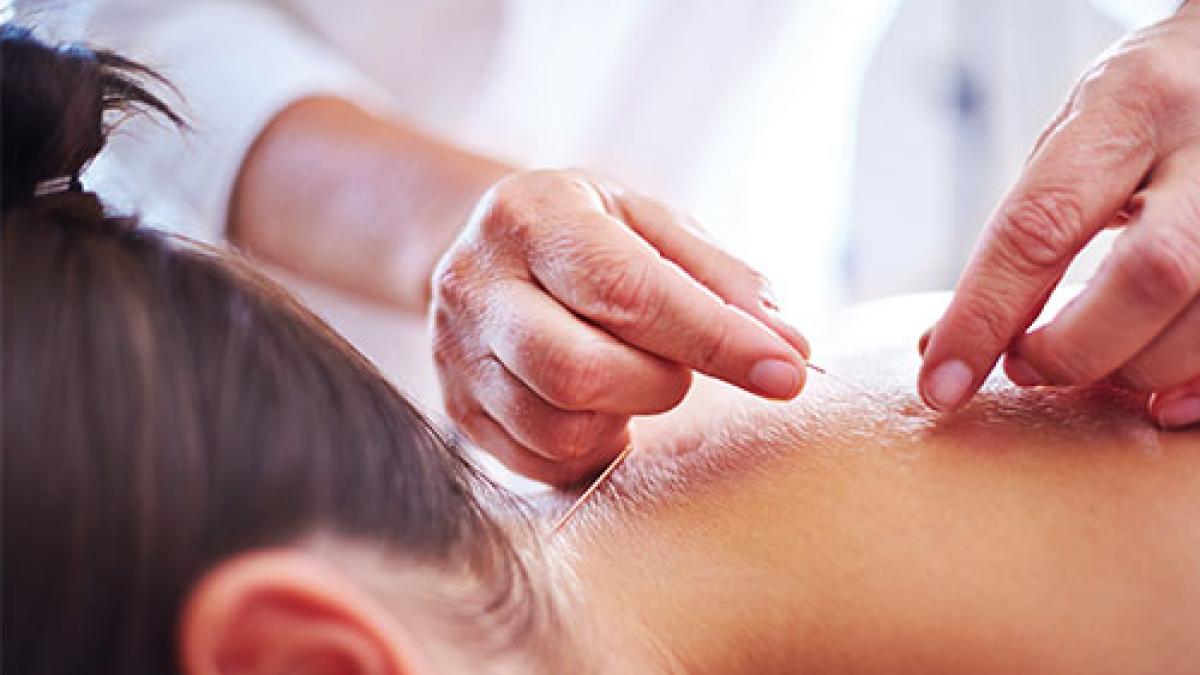In our regular round-up on research Janet Wright looks at how Cochrane sifts evidence for acupuncture and how virtual reality keeps older people on their feet.

Cochrane sifts evidence for acupuncture
Neck or head pain may be relieved by acupuncture, recent Cochrane reviews have found. Kien Trinh, of McMaster University in Ontario, Canada, and colleagues reviewed 27 studies of 5,462 people with neck pain from various causes.
The team, updating a 2006 review, found that acupuncture worked better than sham treatments or nothing in relieving pain and disability. Any side-effects were minor.
However, the evidence was only of low to moderate quality. Studies tended to be small and, in some cases, researchers failed to check that participants were randomly assigned to a group, or to note how many had dropped out.
‘Since the time of our previous review, the quality of randomised controlled trials has improved,’ say Dr Trinh’s team. ‘However, few large trials have provided high-quality evidence.’
For migraine or tension headaches, a six-week course of acupuncture can be ‘a valuable option’, according to Klaus Linde, of the Technical University of Munich, and colleagues.
Dr Linde’s team looked at 22 trials with nearly 5,000 participants, comparing acupuncture’s effects on migraine with either drugs, sham treatment or no treatment. They found moderate-quality evidence that acupuncture did have an effect, noting. ‘If people have six days with migraine per month on average before starting treatment, this would be reduced to five days in people receiving only usual care, to four days in those receiving fake acupuncture or a prophylactic drug, and to three and a half days in those receiving true acupuncture.’
For people who have frequent tension headaches, Dr Linde’s team reviewed 12 trials with 2,349 adults. They found moderate to high quality evidence that acupuncture worked better than routine care or sham acupuncture.
Trials comparing acupuncture with physiotherapy, massage or exercise were less favourable to acupuncture in reducing tension headaches. But these trials were of lower quality, the team found. ‘The cumulative evidence suggests that acupuncture is effective in various chronic pain conditions, that correct point selection plays a role ... and that a relevant part of the clinical benefit might be due to needling effects not dependent on the selection of traditional points or powerful placebo effects or both,’ says Dr Linde’s team. Trinh K et al. Acupuncture for neck disorders, Cochrane Database of Systematic Reviews 2016 - open access. Linde K et al. Acupuncture for prevention of episodic migraine, Cochrane Database of Systematic Reviews 2016 - open access. Linde K et al. Acupuncture for the prevention of tension-type headache, Cochrane Database of Systematic Reviews 2016 - open access.
Virtual reality keeps older people on their feet
Adding a virtual reality (VR) component strongly increases the benefit of treadmill training for older people at high risk of falling, a new study has found.
‘Many interventions have been proposed, but few have aimed to prevent falls via an integrated approach targeting both motor and cognitive function,’ say the authors. Anat Mirelman, of Tel Aviv Sourasky medical centre in Israel, and colleagues studied data from 282 older people living in Belgium, Israel, Italy, the Netherlands and the UK.
Aged 60 to 90, nearly half the volunteers had Parkinson’s and 43 had mild cognitive impairment. All of them had fallen at least twice in the six months before the study began.
In the VR group, a camera projected the movement of the walkers’ feet on to a screen in front of the treadmill, so they could see their feet moving in real time. The simulation included challenges such as avoiding obstacles, stepping over puddles and staying on a pathway.
Participants were divided into two groups for treadmill training, with or without VR. They did an average of three 45-minute sessions a week for six weeks.
During the six months afterwards, the VR group had 42 per cent fewer falls than in the six months before. People with Parkinson’s made the biggest improvements. Participants who only used the treadmill had no significant improvement. Mirelman A et al. Addition of a non-immersive virtual reality component to treadmill training to reduce fall risk in older adults (V-TIME): a randomised controlled trial, Lancet 2016.
Comments and conclusions
- People’s risk of the heart condition atrial fibrillation increases sharply in the fortnight after their partner dies, especially if the death was unexpected. Researchers studying Danish data on nearly a million people say that the risk subsides to normal over the following year. Graff S et al. Open Heart 2016 - open access.
- Swimming and cycling were equally effective in reducing the joint pain and stiffness of osteoarthritis while improving muscle strength and functional capacity, in a study of 48 people who did three months of either swimming or cycling, for 45 minutes three times a week. Alkatan M et al. Journal of Rheumatology 2016.
Author
Janet WrightNumber of subscribers: 2




































